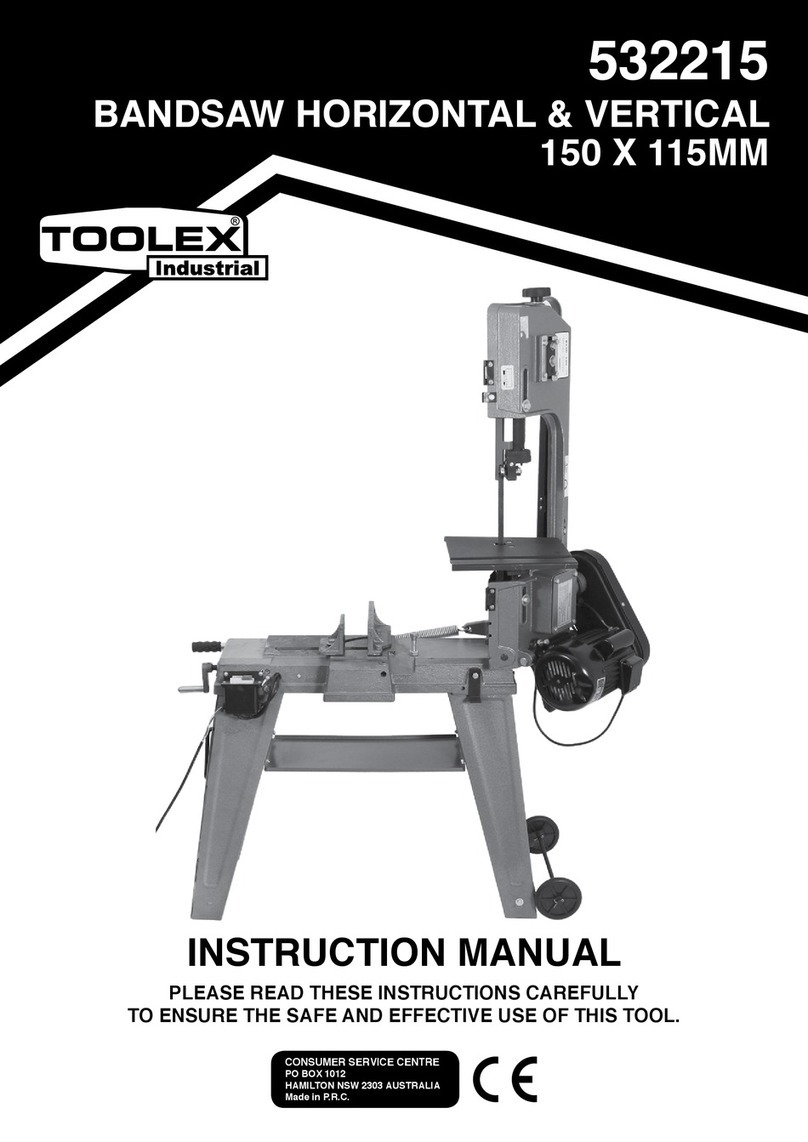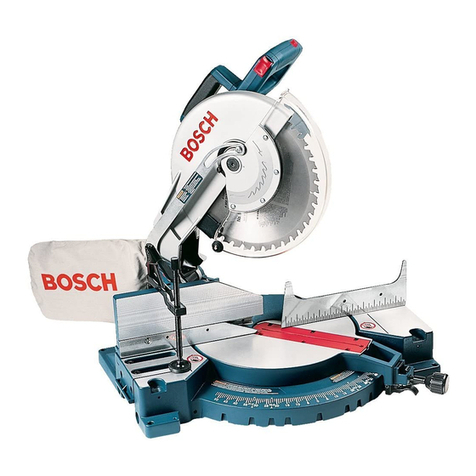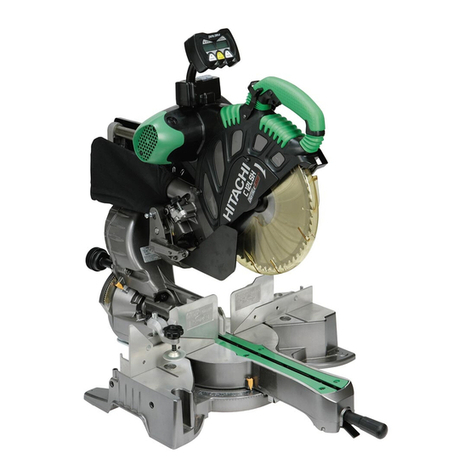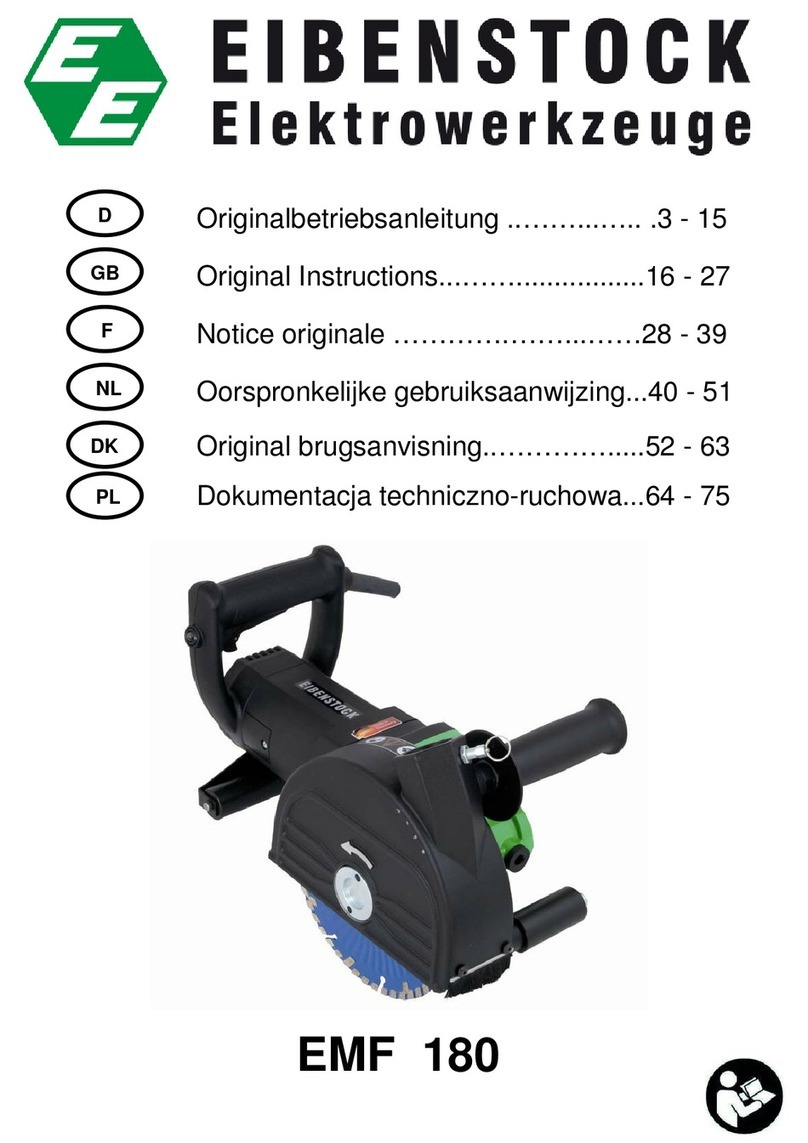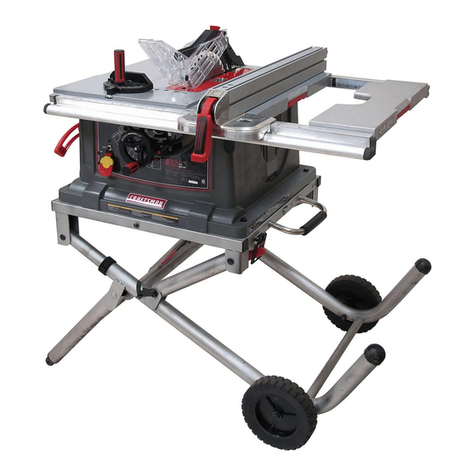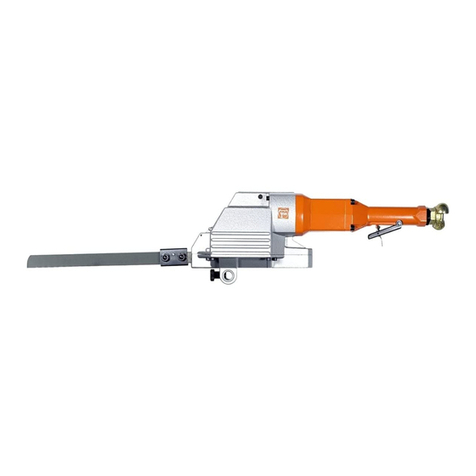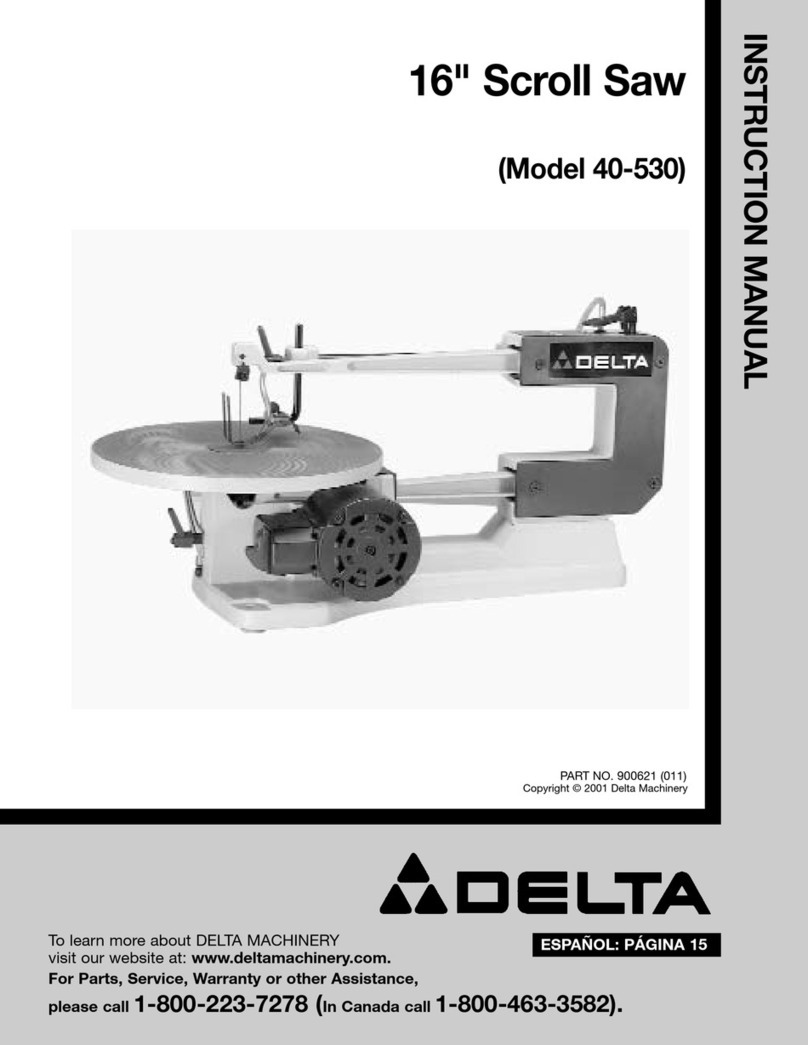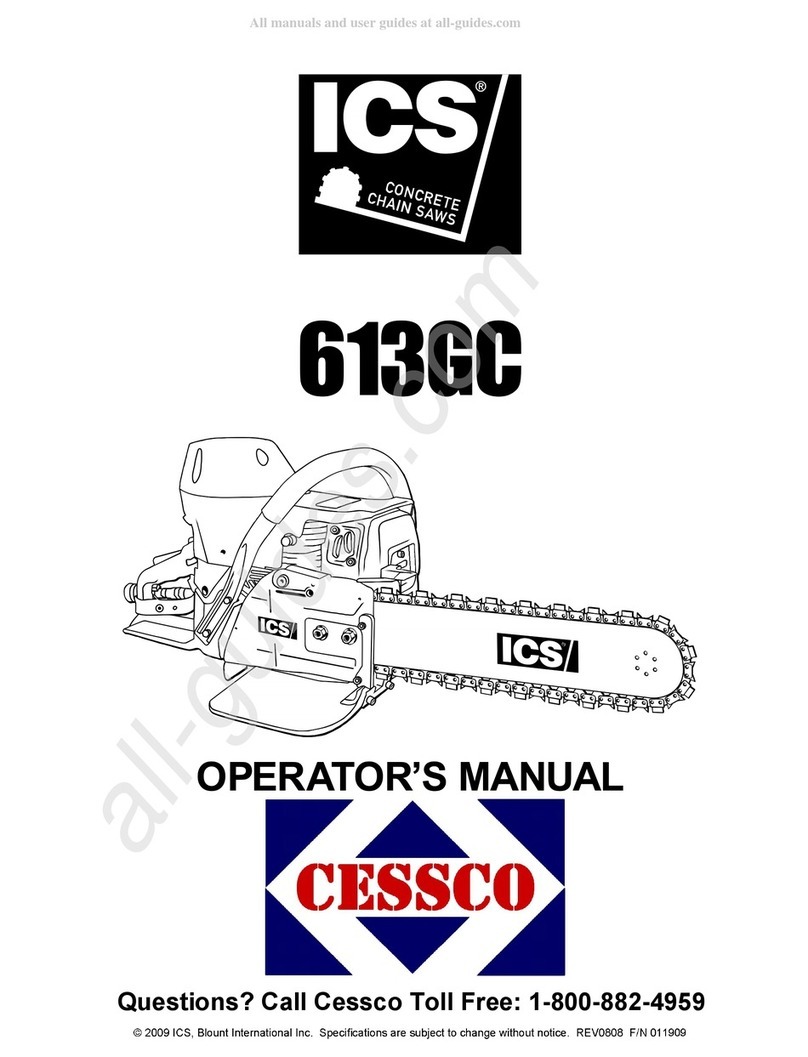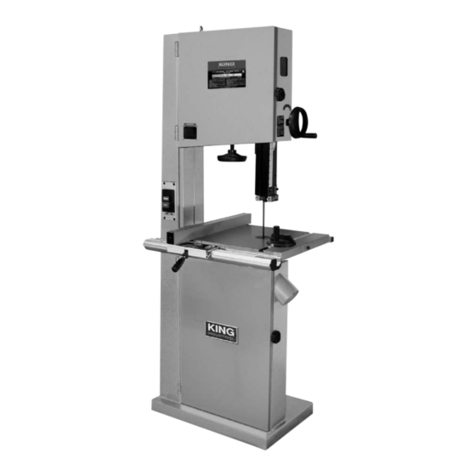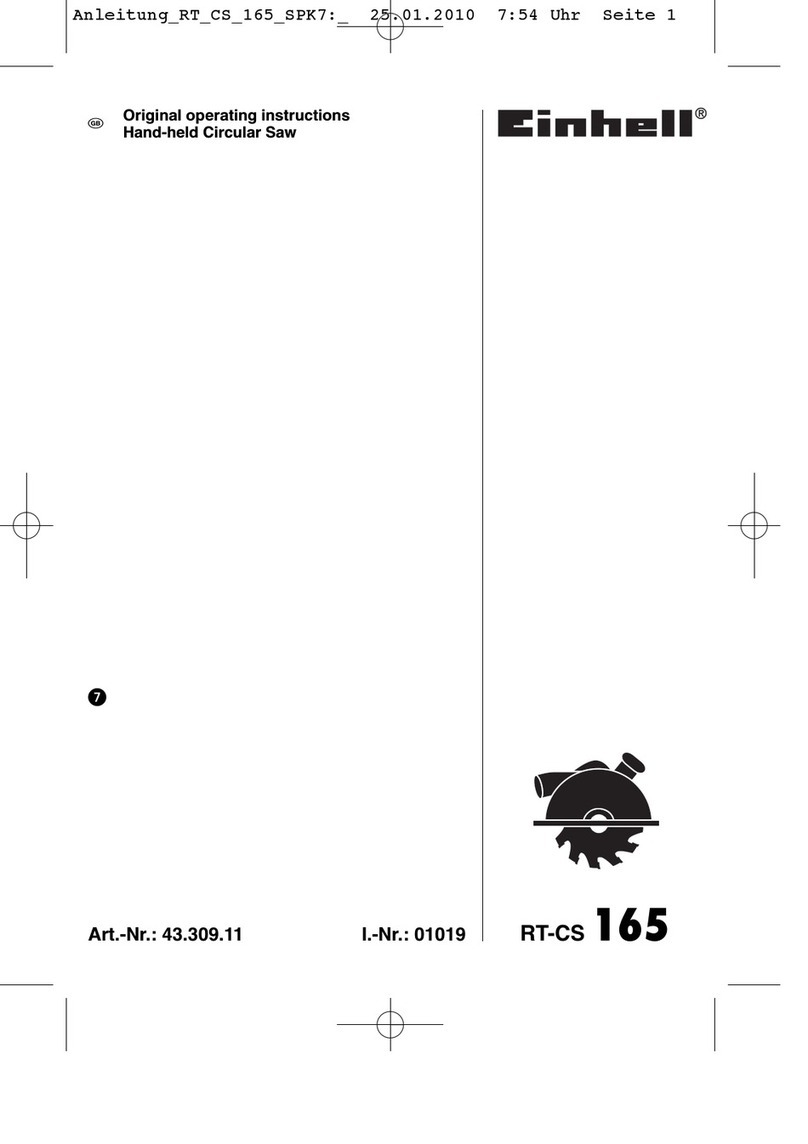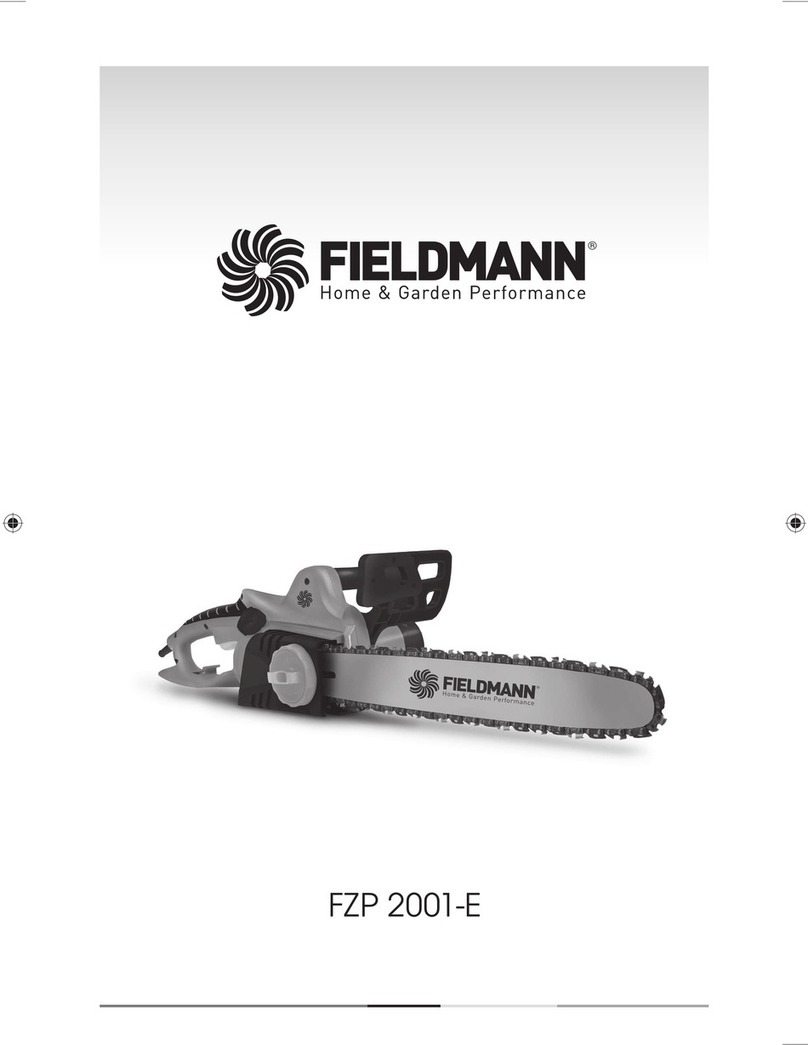Toolex 535819 User manual

INSTRUCTION MANUAL
CONSUMER SERVICE CENTRE
PO BOX 1012
HAMILTON NSW 2303 AUSTRALIA
Made in P.R.C.
535819
TILTING ARBOR
TABLE SAW
Tilting Arbor Table Saw

1
PREFACE .......................................................................................................................... 0
GENERAL SAFETY RULES FOR WOODWORKING MACHINERY.......................... 0
ADDITIONAL SAFETY RULES FOR CIRCULAR SAWS............................................ 0
ASSEMBLY INSTRUCTION ........................................................................................... 0
SPECIFICATIONS ............................................................................................................ 1
ELECTRICAL.................................................................................................................... 1
WIRING DIAGRAMS....................................................................................................... 1
GLOSSARY OF TERMS FOR WOODWORKING.......................................................... 1
MACHINE LEGEND......................................................................................................... 1
ASSEMBLE AND ADJUSTMENTS................................................................................. 1
ASSEMBLE AND ADJUSTMENTS................................................................................. 1
ASSEMBLE AND ADJUSTMENTS................................................................................. 1
ASSEMBLE AND ADJUSTMENTS................................................................................. 1
ADJUSTING THE MITER GAUGE ................................................................................. 1
ASSEMBLY DIAGRAM................................................................................................... 1
ASSEMBLY DIAGRAM................................................................................................... 1
ASSEMBLY DIAGRAM................................................................................................... 1
ASSEMBLY DIAGRAM................................................................................................... 1
PART LIST .................................................................................... 錯誤! 尚未定義書籤。
TABLE OF CONTENTS

2
Thank you for choosing this tilting arbor table saw. We are pleased to offer you our best
machinery and service, and trust that you will find our machinery economical, productive and easy
to operate.
This manual covers the proper operation, safety and maintenance of the machine. It is
important that this manual be read in its entirety before operating the machine. Although the
machine has been checked and inspected in compliance with relevant safety regulations, the
machine's safety and best performance are dependent on proper maintenance and operation.
Hazards that arise due to improper operation and maintenance are solely the responsibility of the
operator.
We thank you again for you choice, and for your careful reading of this manual.
There is a certain amount of hazard involved with the use of woodworking machinery. Using the
machine with the respect and caution demanded as far as safety precautions are concerned will
considerably lessen the possibility of personal injury. However, if normal safety precautions are
overlooked or ignored, several personal injury to the operator can occur. If you have any questions
relative to its application DO NOT use the tool until you have read what we have advised you.
1. KNOW YOUR POWER TOOL. Read the owner’s manual carefully. Learn the tools
applications and limitations, as well as the specific potential hazards peculiar to it.
2. KEEP GUARDS IN PLACE and in working order.
3. GROUND ALL TOOLS. If tool is equipped with three-prong plug. It should be plugged into a
three-pole electrical receptacle. If an adapter is used to accommodate a two-prong receptacle,
the adapter lug must be attached to known ground. Never remove the third prong.
4. REMOVE ADJUSTING KEYS AND WRENCHES. Form habit of checking, to see that keys
and adjusting wrenches are removed from tool before turning it on.
5. KEEP WORK AREA CLEAN. Cluttered areas and benches invite accidents.
6. AVOID DANGEROUS ENVIRONMENT. Don’t use power tools in damp or wet locations, or
expose them to rain. Keep work area well lighted.
7. KEEP CHILDREN AND VISITORS AWAY. All children and visitors should be kept a safe
distance from work area.
8. MAKE WORKSHOP KID PROOF with padlocks, master switch, or by removing starter keys.
9. DON’T FORCE TOOL. It will do the job better and be safer at the rate for which it was
designed.
10. USE RIGHT TOOL. Don’t force tool or attachment to do a job for which it was not designed.
PREFACE
GENERAL SAFETY RULES FOR WOODWORKING MACHINERY

3
11. WEAR PROPER APPAREL. No loose clothing, gloves, neckties, rings, bracelets, or jewelry to
get caught in moving parts. Non-slip footwear is recommended. Wear protective hair covering
to contain long hair.
12. ALWAYS USE SAFETY GLASSES. Also use face or dust mask if cutting operation is dusty.
Everyday eyeglasses only have impact resistant lenses, they are NOT safety glasses.
13. SECURE WORK. Use clamps or a vise to hold work, when practical. It’s safer than using your
hand and frees both hands to operate tool.
14. DON’T OVERREACH. Keep your proper footing and balance at all times.
15. MAINTAIN TOOLS IN TOP CONDITION. Keep tools sharp and clean for best and safest
performance. Follow instructions for lubricating and changing accessories.
16. DISCONNECT TOOLS before servicing and when changing accessories such as blades, bits,
cutters.
17. USE RECOMMENDED ACCESSORIES. Consult the owner’s manual for recommended
accessories. The use of improper accessories may cause hazards.
18. AVOID ACCIDENTAL STARTING. Make sure switch is in “OFF” position before plugging in
cord.
19. NEVER STAND ON TOOL. Serious injury could occur if the tool is tipped or if the cutting tool
is accidentally contacted.
20. CHECK DAMAGED PARTS. Before further use of the tool, a guard or other part that is
damaged should be carefully checked to ensure that it will operate properly and perform its
intended function-check for alignment of moving parts, binding of moving parts, breakage of
parts, mounting ,and any other conditions that may affect its operation. A guard or other part
that is damaged should be properly repaired or replaced.
21. DIRECTION OF FEED. Feed work into a blade or cutter against the direction of rotation of the
blade or cutter only.
22. NEVER LEAVE TOOL RUNNING UNATTENDED. TURN POWER OFF. Don’t leave tool until
it comes to a complete stop.
23. NO DRUGS, ALCOHOL, MEDICATION. Do not operate tool while under the influence of
drugs, alcohol or any medication.

4
1. ALWAYS use saw-blade guard and spreader for every operation for which it can be used,
including all through sawing. Thru-sawing operations those when the blade cuts completely
through the work piece as in ripping or cross cutting.
2. ALWAYS hold the work firmly against the miter gage or fence.
3. ALWAYS use a push stick for ripping narrow stock. Refer to ripping applications in instruction
manual where push stick is covered in detail.
4. NEVER perform any operation “free-hand” which means using your hands to support or guide
the work piece. Always use either the fence or the miter gage to position and guide the work.
5. NEVER stand or have any part of your body in line with the path of the saw blade.
6. NEVER reach in back of or over saw blade.
7. MOVE the rip fence out of the way when cross cutting.
8. WHEN cutting molding. NEVER run the stock between the fence and the molding cutter head.
Refer to molding applications in instruction Manual for details.
9. DIRECTION OF FEED. Feed work into a blade or cutter against the direction or rotation of the
blade or cutter only.
10. NEVER use the fence as a cut-off gage when cross cutting.
11. NEVER attempt to free a stalled saw blade without first turning the saw OFF.
12. PROVIDE adequate support to the rear and sides of the saw table for wide or long work pieces.
13. AVOID KICKBACKS (work thrown back toward you) by keeping blade sharp. Keeping rip
fence parallel to the saw blade. Keeping splitter and ant kickback figures and guard in place
and operating, by not releasing work before it is pushed all the way past the saw blade, and by
not ripping work that is twisted or does not have a straight edge to guide along the fence.
14. AVOID awkward operations and hand positions where a sudden slip could cause your hand to
move into the cutting tool.
15. NEVER use solvents to clean plastic parts. Solvents could possibly dissolve or otherwise
damage the material. Only a soft damp cloth should be used to clean plastic parts.
16. ALWAYS bolt the saw to the supporting surface or use a sturdy outrigger support if a table
extension more than 24 in long is attached to the saw.
TOOLS PROVIDED FOR ASSEMBLY
1. Arbor-blade guard bracket wrench.
2. 12mm combination wrench.
3. Two Allen wrenches.
ADDITIONAL TOOLS REQUIRED
ASSEMBLY INSTRUCTION
ADDITIONAL SAFETY RULES FOR CIRCULAR SAWS

5
1. Straightedge.
2. Large slot and large Phillips screwdrivers. 3. Socket Wrench (recommended) and
Adjustable wrench.
MODEL 10LP-A
Speed 4000R.P.M
Diameter of arbor 5/8”(16mm)
Diameter of cut 10”(254mm)
MAX. depth of cut 3-1/8”(79mm)
MAX. depth of cut at 45. 2-1/8”(54mm)
Distance in front of blade 10.23”(260mm)
Table (LXM) 686X512mm
Extension wing(LXW) 686X305mm
Motor 1.5HP/240V
Net Weight 116.4kg
Gross Weight 136kg
All specification, dimensions and design characteristics shown in this catalogue are
subject to change without notice.
SPECIFICATIONS

6
EXTENSION CORDS
Use only 3-wire extension cords that have 3-prong
grounding plugs and 3-pole receptacles that accept
the tool’s plug, When using a power tool at a
considerable distance from the power source, use
an extension cord heavy enough to carry the
current that the tool will draw. An undersized
extension cord will cause a drop in line voltage,
resulting in a loss of power and cause the motor to
overheat. Use the chart provided below to
determine the minimum wire size required in an
extension cord. Only round jacketed cords listed
by Underwriters Laboratories (UL) should be used.
When working with the tool outdoors, use an
extension cord that is designed for outside use.
This is indicated by the letters WA on the cord’s
jacket.
Before using an extension cord, inspect it for loose
or exposed wires and cut or worn insulation.
▲CAUTION: keep the cord away from the
cutting area and position the cord so that it will
not be caught on lumber, tools, or other objects
during cutting operations.
ELECTRICAL CONNECTION
Your Table Saw is powered by a precision built
electric motor.
Do not operate this tool on direct current(DC). A
substantial voltage drop will cause a loss of power
and the motor will overheat. If the saw does not
operation when plugged into an outlet, double
check the power supply.
SPEED AND WIRING
The no-load speed of your table saw is
approximately 3600 rpm. This speed is not
constant and decreases under a load or with lower
voltage. For voltage, the wiring in a shop is as
important as the motor’s horse-power rating. A
line intended only for lights cannot properly carry
a power tool motor. Wire that is heavy enough for
a short distance will be too light for a greater
distance. A line that can support one power tool
may be able to support two or three tools.
GROUNDING INSTRUCTIONS
1. All ground, cord-connected tools:
In the event of a malfunction or breakdown,
grounding provides a path of least resistance for
electric current to reduce the risk of electric
shock. This tool is equipped with an electric
cord having an equipment-grounding conductor
and a grounding plug. The plug must be
plugged into a matching outlet that is properly
installed and grounded in accordance with all
local codes and ordinance.
Do not modify the plug provided. If it will not
fit the outlet, have the proper outlet installed by
a qualified electrician.
Improper connection of the equipment-
grounding conductor can result in a risk of
electric shock. The conductor with insulation
having an outer surface that is green with or
without yellow stripes is the equipment -
grounding conductor. If repair or replacement
of the electric cord or plug is necessary, do not
connect the equipment-grounding conductor to
a live terminal.
Check with a qualified electrician or service
personnel if the grounding instructions are not
completely understood, or if in doubt as to
whether the tool is properly grounded.
Repair or replace a damaged or worm cord
immediately.
Volts Total length of cord in feet
120v 25ft 50ft 100ft 150ft
Ampere Rating 240v 50ft 100ft 200ft 300ft
More
than Not more
than AWG
6 10 18 16 14 12
10 12 16 16 14 12
12 16 14 12 Not
Recommended
!
ELECTRICAL

7
2. Grounded, cord-connected tools intended
for use on a supply circuit having a nominal
rating less than 150V:
This tool is intended for use on a circuit that
has an outlet that looks like the one illustrated
in Sketch A in Figure1.2. The tool has a
grounding plug that looks like the plug
illustrated in Sketch A in Figure 1.2. A
temporary adapter, which looks like the adapter
illustrated in Sketches B and C, may be used to
connect this plug to a 2-pole receptacle as
shown in sketch B if a properly grounded outlet
is not available. The temporary adapter should
be used only until a properly grounded outlet
can be installed by a qualified electrician. The
green-colored rigid ear, lug, and the like,
extending from the adapter must be connected
to a permanent ground such as a properly
grounded outlet box.
※ Note: In Canada, the use of a temporary
adaptor is not permitted by the
Canadian Electrical Code.
3. Grounded, cord-connected tools intended
for use on a supply circuit having a nominal
rating between 150-250V, inclusive:
This tool is intended for use on a circuit that
has an outlet that looks like the one illustrated
in Sketch D in Figure 1.2. The tool has a
grounded plug that looks like the plug
illustrated in Sketch D in Figure 1.2. Make
sure the tool is connected to an outlet having
the same configuration as the plug. No adapter
is available or should be used with this tool. If
the tool must be reconnected for used on a
different type of electric circuit, the
reconnection should be made by qualified
service personnel; and after reconnection, the
tool should comply with all local codes and
ordinances.
Fig.1.2
GROUNDING
PIN COVER OF GROUNDED
OUTLET BOX
Fig.1.1
GROUNDING PIN COVER OF GROUNDED
OUTLET BOX
METAL SCREW
ADAPTER
GROUNDING
MEANS
GROUNDING
PIN

8
When rewiring the supplied electric motor, be sure power cord is unplugged then change
the connection as illustrated below. Always secure wire nuts with friction tap. A new plug
will be required.
NOTE: The reconnection shall be made by qualified electrician or service personnel.
1. TO 110 VOLT. Open motor wire box, contact No.1 red motor wire and No.3 yellow motor wire to
either power wire; than contact No.2 black motor wire and No.4 white motor wire to another power
wire. Please refer to Fig. 1.3.
Fig.1.3
2. TO 220 VOLT. Open motor wire box, contact No.1 red motor wire to either power wire, and
contact No.4 white motor wire to another power wire, than contact No.2 black motor wire to No.3
yellow motor wire. Place refer to Fig.1.4.
WIRING DIAGRAMS

9
Fig1.4
Anti-Kickback Pawls
Toothed safety devices behind the blade designed
to stop a workpiece from being kicked back at the
operator during a ripping operation.
Arbor
The shaft on which a blade or cutting tool is
mounted.
Bevel Cut
A cutting operation made with the blade at any
angle other than 90°to the saw table.
Compound Cut
A cut with both a miter angle and a bevel angle.
Crosscut
A cutting operation made across the grain or the
width of the workpiece.
Dado
A non-through cut that gives a square notch or
though; requires a special blade.
Feather board
A device to help guide workpieces during rip cuts.
Freehand(for Table Saw )
Dangerous practice of making a cut without using
rip or miter fences. See Safety Rules.
Gum
A sticky, sap-based residue from wood products.
Heel
Alignment of the blade.
Kerf
The material removed by the blade in a through cut or
the slot produced by the blade in a non-through cut.
Kickback
A hazard that can occur when blade binds or stalls,
throwing workpiece back toward operator.
Leading End
The end of the workpiece pushed into the cutting tool
first.
Miter Cut
A cutting operation made with the miter gage at
any angle other than 0°
Molding
A non-through cut that gives a varied shape to the
workpiece and requires a special blade.
Push Stick
A device used to feed the workpiece through the
saw blade during narrow cutting operations. It
helps keep the operator’s hands well away from
the blade.
Rabbet
A notch in the edge of a workpiece.
Re saw
A cutting operation to reduce the thickness of the
workpiece in order to make thinner pieces.
Resin
A sticky, sap-based substance.
Rip Cut
A cut made with the grain of the workpiece.
Saw blade Path
The area directly in line with the blade –over,
under, behind, or in front of it. Also, the workpiece
area which will be or has been cut by the blade.
Set
The distance that the tip of the saw blade tooth is
bent (or set ) outward from the face of the blade.
Throw-Back
Saw throwing back a workpiece; similar to
kickback.
Through Sawing
Any cutting operation where the blade extends
completely through the workpiece.
Trailing End
The workpiece end last cut by the blade in a rip
cut.
GLOSSARY OF TERMS FOR WOODWORKING

10
Workpiece
The item on which the cutting operation is being
done. The surfaces of a workpiece are commonly
referred to as faces, ends, and edges.
Worktable
The surface on which the workpiece rests while
performing a cutting operation.
Bevel handwheel
Rip fence handle Bevel handwheel
Rear rail
Extension Wing
Anti-kickback pawls
Spreader
Blade
Blade cover
Handle
Sliding table
Miter gauge
Front rail
Switch with key
Fig. 2
MACHINE LEGEND

11
OVERVIEW
The upper position of the blade projects up through the table, surrounded by an insert called the
thru plate. The height of the blade is set with a hand wheel on the front of the cabinet. To
accommodate wide panels, the tabletop has extensions on each side. Detailed instructions are
provided in the Operation section of this manual for the basic cuts:Cross cuts, miter cuts, bevel
cuts, and compound cuts.
For cuts with the blade straight up and cutting across the grain (cross cuts or miter cuts), use the
miter gage to set the angle and push the wood into the blade. To cut with the blade straight up,
along the grain of the wood (rip cuts), use the rip fence to guide the wood Push smaller pieces with
a push block or push stick. To tilt the blade for a bevel cut, use the hand wheel on the side of the
cabinet. A bevel scale on the front of the cabinet shows the blades angle. Use the miter gauge with
a bevel cross cut (compound cut) and the rip fence with a bevel rip cut. Other cuts require special
attachments, which have detailed instruction to reduce risk of injury and ensure the best
performance from your new saw.
Before attempting to use your saw, familiarize yourself with all operating features and safety
requirements of your table saw. The saw's features are described below .
ANTI-KICKBACK PAWLS – Kickback is a hazard in which the work piece is thrown back toward
the operator. The toothed pawls are designed to snag the work piece to prevent or reduce injury
should kickback occur.
BEVEL HANDWHEEL – This hand wheel on the right side of the cabinet tilts the blade for a bevel
cut.
BEVEL SCALE – The easy–to–read scale on the front of the work stand shows the exact blade
angle.
BLADE – This saw is provided with a 36 tooth, 10 in. steel blade. The blade is adjusted with bevel
and height hand wheels on the cabinet. Bevel angles are locked with a handle below the front rail.
BEVEL LOCK HANDLE – This handle, placed just under the worktable surface on the front of the
cabinet, locks the angle setting of the blade. Be sure the handle is hanging straight down before
tilting the blade. If it is not straight down, it may jam and bend the locking bolt.
HEIGHT HANDWHEEL – Use this hand wheel to lower and raise the blade for adjustments or
replacement. It is located on the right of the cabinet.
MITER GAUGE – This gage aligns the wood for a crosscut. The easy-to-read indicator shows the
exact angle for a miter cut, with positive stops at 90 ゚and 45 ゚.
MITER GAUGE GROOVES – The miter gage rides in these grooves on either side of the blade.
RAILS – Front and rear rails provide support for large work pieces and the rip fence.
RIP FENCE – A sturdy metal fence guides the work piece and is secured with the rip fence handle.

12
Grooves run along the top and sides of the rip fence for use with optional clamps and accessories.
RIP FENCE HANDLE – The handle on the front of the rip fence releases the rip fence or locks it in
place.
RIVING KNIFE OR SPREADER – Located directly behind the blade, it keeps cut edges from
binding and supports the blade guard.
SCALE – Found on the front rail, the easy–to–read scale provides precise measurements in rip
cuts.
EXTENSIONS WINGS – Removable stamped steel extensions, 12 in. By 27 in., support larger
work pieces.
WARNING:
1. Be sure to use only blades rated for at least 4000 rpm and recommended for use on this saw.
2. Please use the standard blade according to the specification mark on the blade as Fig.2-2 &
Fig.2-3:
Fig.2-2 Fig.2-3
!

13
ASSEMBLE THE RAISING
AND TILTING HANDWHEELS AND LOCK KNOBS
1. Place the wheels in position over the raising and tilting screws being sure to engage the slots,
a (Fig.3), in back of each wheel with the roll pins, b(Fig.3), as shown at right.
2. Screw on lock knobs c(Fig.4), to hold wheels in place, then attach silver handles, d(Fig.4)
tightening them with the supplied 12mm combination wrench.
3. To use rising and tilting wheels, loosen lock nuts (but not too much or roll pins will disengage
from slots), turn wheels to desired position and retighten lock nuts. Do not operate saw with
lock nuts untightened as the blade could move out of position.
REMOVE GREASE FROM THE SAW TOP
The protective coating on the saw table top and extension wings
prevents rust from forming during shipping and storage. Remove it by
rubbing with a rag dipped in kerosene, mineral spirits or paint thinner.
(Dispose of potentially flammable solvent–soaked rags according to
manufacturer’s safety recommendations.) A putty knife, held flat to
avoid scratching the surface, may also be used to scrape off the
coating followed by clean–up with solvent. Avoid rubbing the saw’s
painted surfaces, as many solvent–based products will remove paint.
ASSEMBLE THE EXTENSION WINGS
Attach extension wings using the 6 hex head screws and lock
washers. Make screws only finger tight at first. Use a straightedge to
ensure that wing is level with table from front to back. Gently tap wing
up or down, then tighten screws with the supplied combination
wrench, leaving the center screw last to be tightened.
ASSEMBLE AND ADJUSTMENTS
Fig. 3 Fi
g
. 4
Fig. 5
Fig. 6
a
b
c
d

14
Be sure that extension wings are flush with front edge of table and that the painted ends face out.

15
CHECK HEELING (PARALLELING)
OF THE SAWBLADE TO THE
MITER GAGE GROOVE
See Figures 7 and 8.
DO NOT loosen any screws until you have
checked with a square and made sure
adjustments are necessary. Once the screws are
loosened, these items must be reset.
WARNING: Make sure the switch is off, and
your saw is unplugged. Failure to do so could
result in accidental starting, resulting in serious
personal injury.
WARNING: The saw blade must be parallel
to the miter gauge groove so the wood does not
bind, resulting in kickback. You could be hit or cut.
Lift the blade guard. Raise the blade all the way
by turning the height hand wheel.
Mark beside one of the saw blade teeth at the
front of the blade. Place a framing square
beside the blade on the mark. Be sure the
framing square is between the teeth and flat
against the blade. Measure the distance to the
right miter gauge groove.
Turn saw blade so the marked tooth is at the
back.
Move the square to the rear and again measure
the distance to the right miter gage groove. If
the distances are the same, the blade and the
miter gauge groove are parallel. No
adjustments are needed.
If the distances measured are different, adjust
the table bracket underneath the saw. See
"Heeling (Paralleling) The Saw blade To The
Miter Gauge Groove" in the Adjustments
section.
Fig.7
Fig.8
MARKED TOOTH
AT FRONT
MARKED TOOTH
FRAMING SQUARE
MITER GAGE GROOVE
!
!
ASSEMBLE AND ADJUSTMENTS

16
CHECKING SQUARENESS OF EXTENSION TABLES SAW TABLE
See Figure 9 and 10.
The extension wing should be checked for squatness to the saw table for smooth operation
of the rip fence and rails.
Place a square on the saw table, with the short end up and check .The long end of the square
should extend across one of the extension wing. If the extension wing, proceed as follow
Loosen the two hex nuts (one for each rail) securing the front and rear rails to the extension
wing. Do not loosen hex nuts securing rails to saw table
Raise or lower extension wing until it is square with the saw table.
Tighten hex nuts securely.
Check extension table on opposite side of blade.
Repeat the above procedure until it reaches the Squarness.(Fig.10)
Fig.10
Fig.9
ASSEMBLE AND ADJUSTMENTS

17
K
J
I
BLADE
BLADE
WASHER
BLADE NUT
ARBOR SHAFT
CHANGING THE SAW BLADE.
Attention: left hand thread.
Remove the arbor nut (J) and flange (I).
Place saw blade on arbor shaft making sure teeth point down at the front of the saw.
Reinstall flange and arbor nut and securely tighten.
Remove the locking pin (K).
Check the correct position of the raving knife in regards to the saw blade (see the next section).
Reinstall the saw guard.
Fig.11
MOUNTING AND ADJUST THE RIVING KNIFE:
The supplied riving knife must always be used.
The riving knife has to be adjusted in such a way that over its entire length the gap between saw
blade and riving knife does not exceed min.3 mm and max.8 mm (Fig 12).
Fig.12
ASSEMBLE AND ADJUSTMENTS

18
The handle(L) should keep up as Fig.13. When install the riving knife. Then fix the handle(L) by
rotation after riving knife installation as Fig.14.
L
L
Fig. 13 Fig. 14
TO ADJUST THE RIVING KNIFE:
1. Disconnect the saw from the power source.
2. Move the blade tilt to 0∘(blade 90∘to table) and raise the main blade all the way up.
3. Check both sides of the blade with a straight edge touching the teeth as shown in Figure 15:
---If the straightedge touches the riving knife evenly on both sides, go to step 4.
---if the straightedge only touches the riving knife on one side, go to step 5.
Fig. 15 (checking riving knife alignment) Fig. 16 (checking vertical alignment)
4. Place a machinist’s square flat on the table and slides it against the riving knife as shown in
Figure 16:
--- If the square lies flat against the riving knife, the riving knife is correctly adjusted.
--- If there is a gap between the square and the riving knife, go to Step 6.
5. Loosen the riving knife center bolt and remove the riving knife.

19
6. Use the set screws shown in Figure 17 to adjust the riving knife bracket and re-install the riving
knife.
Fig.17 (set screw for adjusting riving knife)
7. Repeat step 3-7 until the riving knife is centered on the blade and aligned at 90∘to the table.
8. Position the riving knife about 3mm or 1/8” away from the nearest carbide tooth on the main
blade.
9. Lock the riving knife on the safety and appropriate position.
ASSEMMBLE THE BLADE GUARD:
1. Before installation the blade guard, please confirmed Fig.18 the handle (M) keep on open as
Fig.19.
Fig.18 Fig.19
2. Pull up the guards as Fig.18.
3. Insert the guards on the position O & P of spreader as Fig.18.
N
M
O
P
Table of contents
Other Toolex Saw manuals
